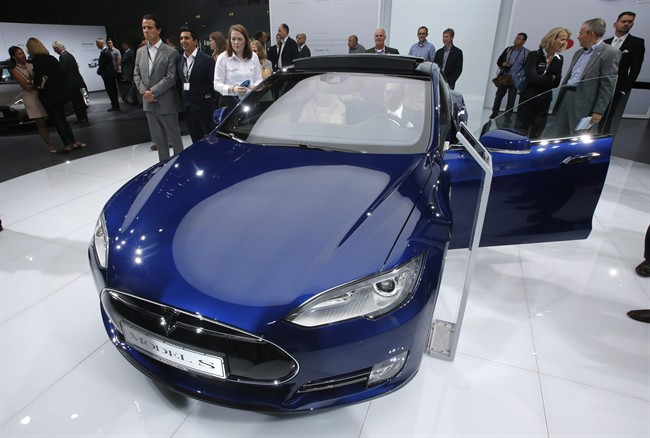OTTAWA – A recent fatal crash involving a semi-autonomous car has transport authorities in Ontario thinking twice about how to regulate so-called driverless cars – and experts are questioning whether auto makers should better educate their customers about the pitfalls of new driving technologies.

Ontario’s ministry of transportation says it’s keeping a close eye on an investigation launched last week by the U.S. National Highway Traffic Safety Administration into a Florida collision between a Tesla Model S and a transport truck.
Tesla said sensors connected to its autopilot system failed to detect the white truck as it turned into the path of the car in May, killing the driver.
While investigators have revealed few details about the exact circumstances of the crash, there have been reports that the driver, 40-year-old Joshua Brown, may have been distracted by a movie playing in his car.
Still, as the Ontario government moves toward testing of driverless cars on the province’s roadways, officials want to know how the Tesla’s driver-assist functions operated in the seconds before the crash.
“The Ministry of Transportation takes the safety of all road users very seriously and will closely follow the results of the U.S. National Highway Traffic Safety Administration’s investigation into the collision and the role automated technology may have played,” said a statement provided by spokesman Bob Nichols.
Tesla did not immediately respond to requests for an interview.
But experts closely involved in the evolution of driverless technologies in Canada say the crash revealed some clear gaps in the regulation of vehicles as they evolve from semi-autonomous systems to vehicles that truly drive themselves.
The onus is on governments and automotive manufacturers to ensure that drivers know how to use the new technologies, but also to know their limitations, said Jeremy Laliberte, a professor at Carleton University’s mechanical and aerospace engineering department.
“Those kind of technologies should be worked into things like driver training curriculum,” said Laliberte.
Transport Canada is proposing stringent training and testing of another blossoming technology: drones that can be operated remotely or on autopilot. But there are no such regulations in the works for automated ground vehicles.
“With things like (unmanned aerial vehicles) the proposal is that every couple of years you’ll have to do an updated test to show that you’re aware of the latest rules and regulations and technologies,” Laliberte explained.
“We have nothing like that for automobiles. You get your license and off you go.”
Auto makers should also be required to offer some basic amount of supplemental training on new driving gadgets to their customers, he added.
Ontario officials say the province doesn’t plan to retrain or retest drivers based on new semi-autonomous features on vehicles, and won’t mandate driver education by manufacturers.
But provincial authorities should do just that, said Barrie Kirk of the Canadian Automated Vehicles Centre of Excellence supports, who voiced concerns about companies such as Volvo, which has pledged to have a “crash proof” car on the market by 2020.
“The long term vision is that cars shouldn’t crash,” Volvo spokesman Jim Trainor told CNN earlier this year.
Statements like that give drivers a false sense of what cars that are hitting the market today are capable of doing, and that can put others in danger, said Kirk.
“It sets up public expectations that the technology is perfect,” he said.
Over the past decade there have been dramatic developments by various automakers of new collision-avoidance mechanisms.
Adaptive cruise control can slow a car down to match the speed of vehicles ahead, blind-spot detectors now watch for oncoming vehicles and camera systems warn drivers when they drift out of their lane or appear to be nodding off. Tesla’s autopilot function goes further, assisting the driver in controlling the vehicle’s movement within lane markers.
But until the technology is improved to the point where a steering wheel is no longer needed, drivers must continue to be fully alert, said Kirk.
“The long-term solution is to move as quickly as we can from using humans as ‘plan B’ to a (fully autonomous) vehicle where the technology has enough artificial intelligence to handle all situations.”
Driverless cars are being tested, largely in the United States and Britain, by the big car manufacturers and high-tech companies, although most jurisdictions require that a driver sit behind the wheel at all times.
But Google, Zoox and other firms developing software for the vehicles say drivers get lulled into a false sense of security after a few minutes of the car doing most of the work, so relying on them to suddenly brake when their cars fail to spot a hazard poses a real danger.
Ontario launched a pilot project Jan. 1 to allow for the testing of driverless cars vehicles on the province’s roads under certain conditions, but not a single firm has taken up the offer.



Comments